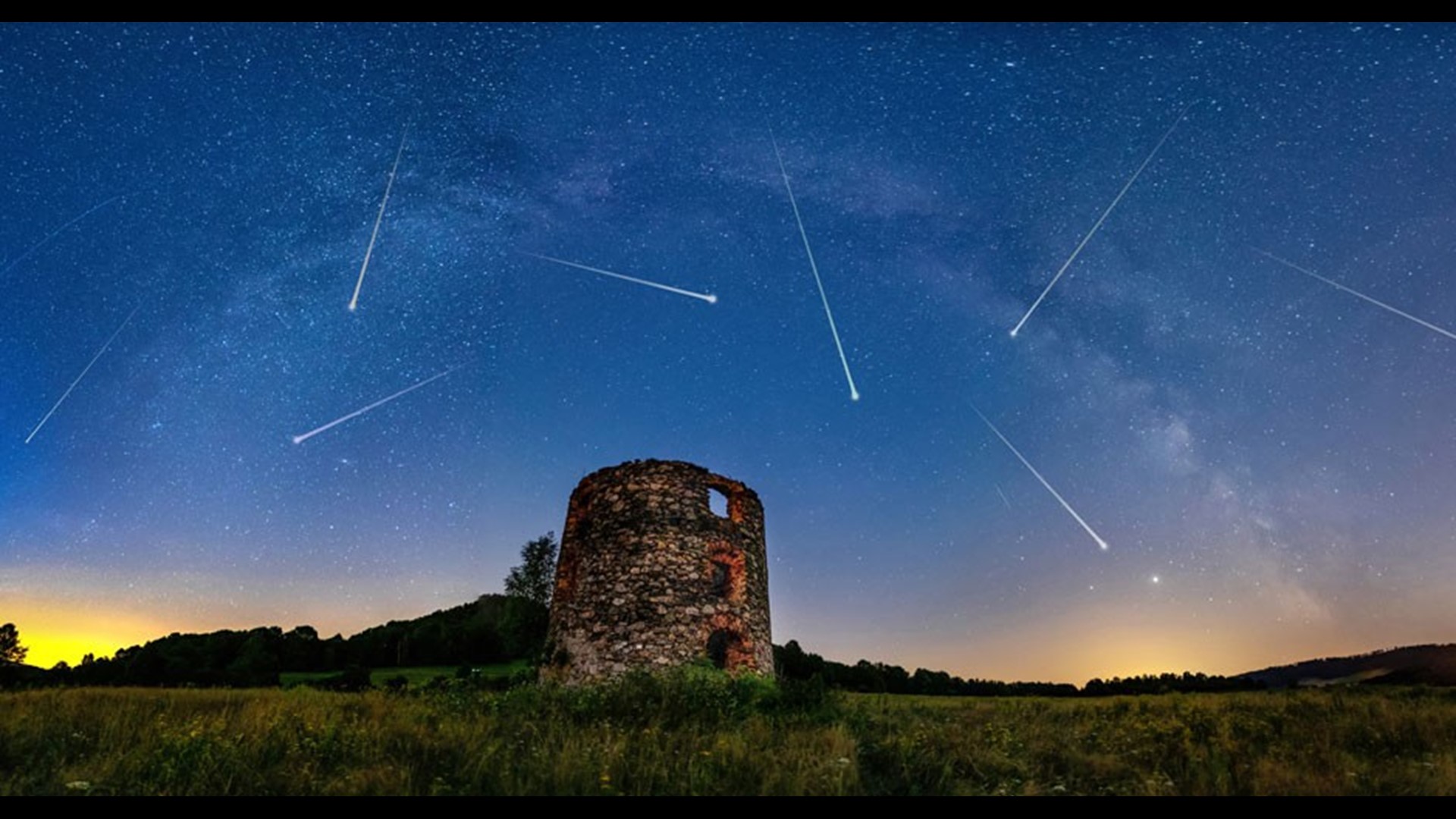PENNSYLVANIA, USA — It's not the biggest and brightest meteor shower of the year, but the Lyrid meteor shower reaches its peak in the pre-dawn sky on Friday.
Tom Wildoner from the Darkside Observatory in Weatherly talked with Newswatch 16 about the upcoming meteor shower.
"The Lyrids produce an average of 20 meteors per hour," Wildoner said. "From my research, I found it was the earliest documented meteor shower. It was recorded in 687 BC by Chinese astronomers."
"This particular comet that creates the Lyrids is called Comet Thatcher. It was last in our area of the solar system in 1861. It won't be back for 415 years," said Wildoner. "The radiant point, or the point where the meteors appear from, come from the constellation Lyra, really close to the star Vega, which is the fifth-brightest star in the sky."
Speaking of bright, a bright waning gibbous moon will be in the sky during the peak of the Lyrids.
"Both those dates are going to have a fairly bright moon which is going to limit the amount of meteors that you can see. But you never know what you're going to find with a meteor shower. The earth may be passing through a particularly dense spot of dust. You just never know."
In addition to the meteor shower, early morning skywatchers will be treated to two conjunctions.
"On April 24, there's going to be a conjunction between the crescent moon and the planet Saturn. The following morning there will be a conjunction between Mars and the crescent moon. Each of those days, the moon will be within about 10 degrees of each planet."
Evening skywatchers aren't left out. Look for Mercury in the western sky on April 24 and April 25, about half an hour after sunset.
"The best way to look for this is to look for the V of the constellation Taurus. Look to the right of that V for the Pleiades. Look directly below the Pleiades for a star-like object. That will be the planet Mercury."
Mercury is particularly bright this time of year, so it should be easy to spot.
See past Skywatch 16 segments on YouTube:

